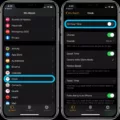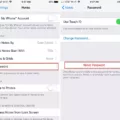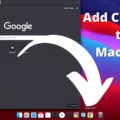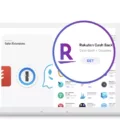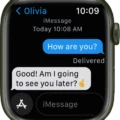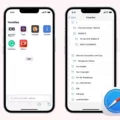If you’ve found yourself asking, “Where is my Safari icon?” then you are not alone. Many iPhone and iPad users have had this issue, where the Safari icon has seemingly disappeared from their home screen. There are a few possible explanations for this issue, and thankfully there are easy solutions as well.
First, it’s possible that the Safari icon has been moved to another folder or hidden home screen. To see if this is the case, flick your finger left or right to switch between Home screens and see if you can find it. If it’s in a folder, it will display the folder name on the right side of the app name after you tap on the app when it appears in search results.
Another possibility is that Safari might be turned off in Screen Time restrictions. To check this, open Settings > Screen Time > Content & Privacy Restrictions > Allowed Apps and make sure Safari is toggled on.
If none of these solutions work, you can try resetting your Home screen layout by going to Settings > General > Reset > Reset Home Screen Layout. This will restore your Home screen layout to factory settings – but be aware that all your apps will also be returned to their original locations as well!
As a last resort, you can use Spotlight Search by swiping down from the middle of any home screen and typing “Safari” into the search field at the top of the screen. This should bring up any hidden folders containing the Safari icon so that you can quickly add it back to your home screen again.
Hopefully one of these solutions helps resolve any issues with your missing Safari icon!
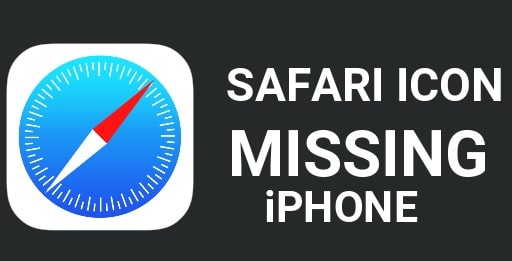
Safari Icon Disappearance
It is possible that your Safari icon has disappeared due to a few different reasons. First, it might have been moved into a folder on your home screen, or you may have accidentally deleted it. Another possibility is that Safari may have been disabled in the Screen Time restrictions of your device. Lastly, if you’ve recently updated your device, the Safari icon may be located on a hidden home screen. To access this home screen, simply swipe left until you find the icon.
What to Do When Safari App Disappears
If your Safari app has gone missing from your iPhone or iPad, there are a few steps you can take to get it back. First, check all of the folders and other screens on your device by flicking your finger left or right to switch between Home screens. You may have accidentally moved it to another screen.
If that doesn’t work, try searching for the Safari app using the search bar at the top of your screen.
Next, check if there are any restrictions on your device that may be preventing you from accessing the Safari app by going into Settings > General > Restrictions and making sure that Safari is allowed.
If none of those options worked, you can try resetting your Home Screen by going into Settings > General > Reset > Reset Home Screen Layout and this will reset all of the app icons back to their default positions.
If all else fails, you can reinstall the Safari app through the App Store – just open up the App Store, search for ‘Safari’ and tap ‘Get’ to download it again.
Location of Safari Icon on iPhone
The Safari icon is usually located on the home screen of your iPhone. Swipe down from the middle of any home screen and type ‘Safari’ into the search field at the top of the screen. If it is in a folder, you will see the folder on the right of the app name after you tap on it when it appears in the search results. If it can’t be found in either place, you can check your App Library by swiping to the leftmost page on your home screen.
Restoring Safari Homepage
To get your Safari homepage back, open the Safari app on your Mac and choose Safari > Settings, then click General. In the Homepage field, enter the address of the page you’d like to use as your homepage. To simply use the webpage you’re currently viewing, click Set to Current Page. If you’d like to set up multiple pages as your homepage, you can enter each webpage address in its own line in the Homepage field. Once you’ve entered all of the addresses, they will appear side by side when you open a new window or tab in Safari.
Restoring Safari Browser
Restoring your Safari browser is easy! First, open the Safari menu and choose ‘Reset Safari’. This will restart your browser and clear out any saved data (such as browsing history, cookies, and cache) that may have been causing the issue with the problematic site. However, please note that this will also erase other saved data such as your bookmarks and website settings. If you wish to preserve these settings, you can manually back up your data before resetting Safari. To do this, open the Safari menu again and select ‘Export Bookmarks’. You can then save a copy of your data to an external storage device or cloud service. Once you’ve backed up your data, then you can proceed with resetting Safari.
![]()
Source: macworld.com
Adding a Safari Icon to the Home Screen
To add the Safari icon to your home screen, start by swiping right on your device until you see the search box. Begin typing in “Safari” and the app should quickly appear. Once you find the Safari icon, press down on it until a menu appears. Select “Add to Home Screen” from this menu and the Safari icon will be added to your home screen for easy access.
Reinstalling the Safari App
The Safari app is built into the iOS operating system and cannot be uninstalled, however, you can reinstall it by resetting your device to factory settings. To do this, open your Settings app, select General > Reset, and then select “Erase All Content and Settings”. This will restore your device to its original state and reinstall the Safari app. Note that this will delete all of the data on your device, so make sure to back up any important information before proceeding.
Restoring the Safari Icon on an iPhone
If you’re using an iPhone running iOS 14 or later, you can easily restore the Safari icon to your Home Screen. First, unlock your phone and swipe left until you come to the App Library. Then, use the search field to find Safari. Once you’ve located the icon, press and hold it until it starts to jiggle. Then, tap the Add button in the top-left corner of your screen and select Add to Home Screen. That’s it! Your Safari icon will now be restored to your Home Screen.
Conclusion
In conclusion, the Safari icon may be missing from an iPhone or iPad due to it having been moved to a folder or hidden home screen, having been turned off in Screen Time Restrictions, or having been accidentally deleted. However, users can check folders and other screens, search for the icon, check restrictions, reset the home screen, and lastly use a swipe down from the middle of any home screen and type Safari into the search field at the top of the screen to locate it.

